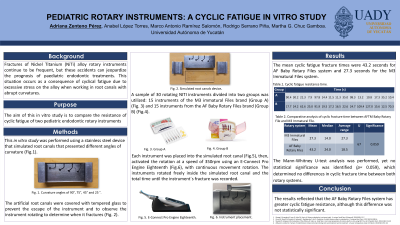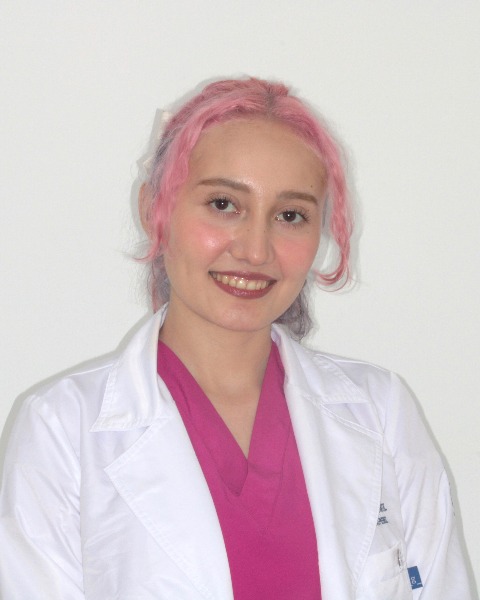Other
251 - Pediatric Rotary Instruments A Cyclic Fatigue Invitro Study


Adriana Zenteno Perez
Master Degree Student
Universidad autonoma de Yucatan
Universidad autonoma de Yucatan
Merida, Yucatan, Mexico- AL
Anabel Lopez Torres, master's degree in pediatric dentistry
Universida Autonoma de Yucatan
- RS
Rodrigo Serrano Piña, Doctor
Universidad Autonoma de Yucatan
- MR
Marco Antonio Ramirez Salomon, n/a
Universidad Autonoma de Yucatan
Merida, Yucatan, Mexico - MC
Martha G. Chuc Gamboa, N/A, n/a
Professor
Universidad Autonoma de Yucatan
Merida, Yucatan, Mexico
Presenting Author(s)
Co-Author(s)
Research Mentor(s)
Program Director(s)
Purpose: The aim of this in vitro study is to compare the resistance of cyclic fatigue of two pediatric endodontic rotary instruments.
Methods: 30 rotary instruments of two different brands were divided into groups of 15; M3 immatural Files brand (UDG) and the AF Baby Rotary Files brand (FANTA). A device simulating root canals with different angles of curvature of 90° with a 6mm radius and a maximum point of curvature of 5mm, designed for the evaluation of cyclic fatigue in NiTi instruments, was used. Each instrument was tasted using the E-connect Pro endodontic motor, activated at 350 rpm with a continuous rotation movement. The instrument rotated freely inside the canal until the fracture occurred.
Results: The mean cyclic fatigue times were 43.2 seconds for the AF Baby RotaryFiles system and 27.3 seconds for the M3 Immatural Files system. The inferential analysis was performed through the nonparametric Mann Whitney u test, finding a U value of 67.00 and p=.059, which determined no statistically significant differences in the cyclic fracture time between both rotary systems.
Conclusion: The difference between the two pediatric rotary systems was not statistically significant. However, the results reported that the AF Baby Rotary Files rotary system evidenced higher resistance to cyclic fatigue, which, probably with a larger sample size, could result in a significant difference.
Identify Supporting Agency and Grant Number: Research supported by Universidad Autonoma de Yucatan

.jpg)